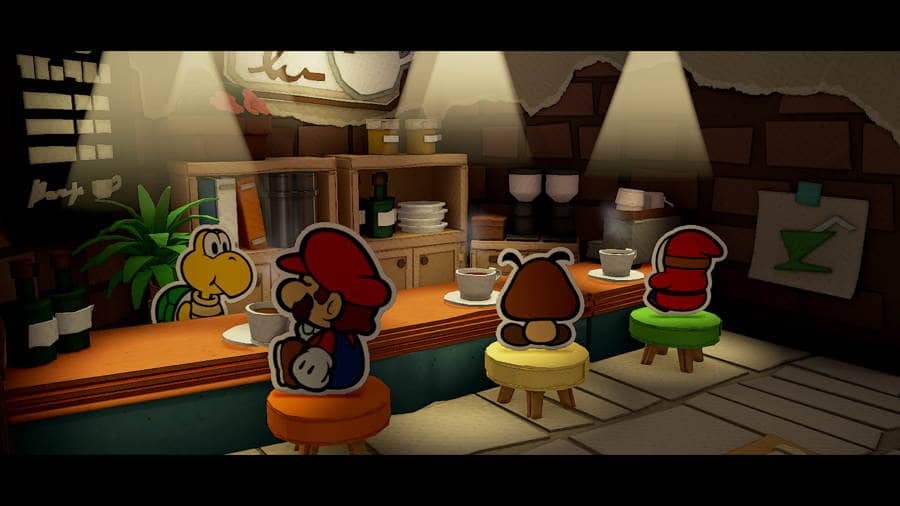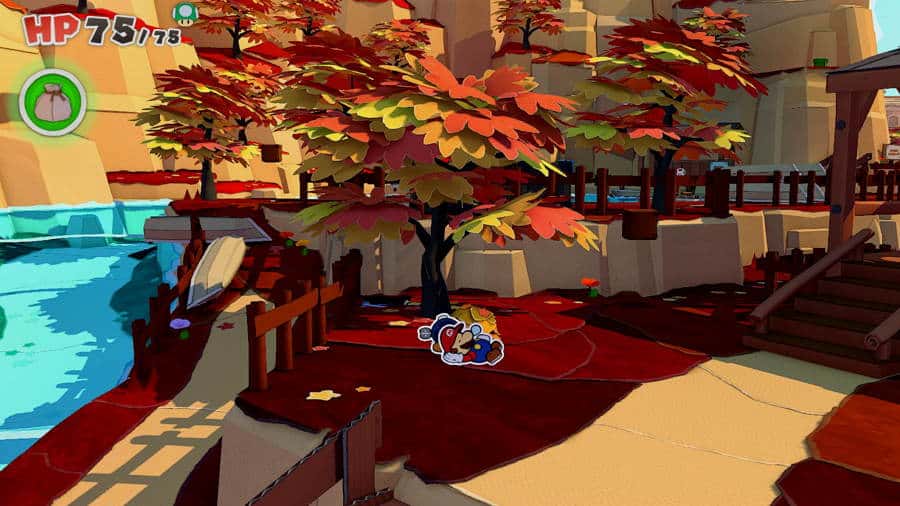Paper Mario: The Origami King Review

Official Score
Overall - 80%
80%
I didn't have any frame issues or crashes during my playthrough. The soundtrack for the game is fantastic, the characters are amusing, and the art direction is spot-on. The game is so close to being a game of the year contender, it hurts.
Paper Mario finally makes its way to the Nintendo Switch with Paper Mario: The Origami King. Is the game a good fit for the system, or should they have skipped the series this generation? Read our review to find out.
Paper Mario: The Origami King Review
[line style=’solid’ top=’10’ bottom=’10’ width=’100%’ height=’1′ color=’blue’]Paper Mario: The Origami King starts with Mario and Luigi being invited to Peach’s castle for the Origami Festival. When they arrive in town, they realize there is no one around. The pair enters Peach’s Castle and find a strangely folded Princess Peach. She asks you to join her in becoming folded and then tosses you into the dungeon. Here you meet with Olivia, the partner who will be with you for most of the game. You also find Bowser folded up, and see his minions being turned into folded soldiers as well.
As you escape, you encounter a man named Olly, who is known as the Origami King. He plans to turn the whole world into origami figures, starting with Peach’s Castle. You then learn that Olivia is Olly’s sister, and she wants to stop him from doing this. Before any confrontation occurs, Olly lifts Peach’s Castle off and sends it into the mountains. Mario, Olivia, and Bowser all escape, and are separated shortly after. What follows is a roughly 20-25 hour journey filled with fun, charm, and an incredibly annoying battle system.
The adventure will bring you all over the Mushroom Kingdom, and is one of The Origami King’s greatest strengths. Each area is fun and unique, but it also feels like it fits right in the Mario universe. Shogun Studios is an oriental-themed amusement park with ninja Toads and samurai Shy Guys. The mysterious eclipse of the Scorching Sandpaper Desert will have you solving ancient puzzles to remove the curse of the moon. Toad Town is a bustling area with tons of Toads waiting to help you in any way they can. They sell you new equipment, train you for battle, and even provide you with a boat later on.

However, not all is well in Toad Town. Lots of Toads have gone missing in the world, and it is your job to find them. Not all of them return to Toad Town, but those that do always give you extra bonuses like coins, new shops, or tidbits of lore. The rest of the Toads you find will cheer you on in battle and even help out – provided you pay them. Tossing coins out during combat will have the Toads jump into the fight and aid you with HP, items, and extra damage. It is a little silly that you have to pay them to do this, but the combat system is ridiculous as it is.
Combat in The Origami King will often leave you frustrated or annoyed. The basic concept is like a puzzle, where you need to rotate rings to line up enemies. You have a certain amount of moves, and a certain amount of time to do this. At first, it’s okay and can even be somewhat enjoyable. After doing it 20 or so times, however, it gets old quick. What makes it worse is that the actual combat part – the hammer and the jump part – is excellent. Remove the ring thing, and the battle system would be spot on and get very few complaints. Instead, you will be searching for ways to avoid fighting.
Boss battles are a little different, and I enjoyed these for the most part. They are still a puzzle system, but you need to make a route to the boss. While the boss is in the middle, you rotate the four rings to make yourself a path to hit the boss, buff yourself, heal up, or get hints on how to beat the baddie. As you progress, the bosses will toss out traps to stop you from taking specific routes, but it is never overly annoying. One boss did regenerate its HP when I didn’t kill it the way the game wanted me to, which really irked me. Still, compared to the typical combat system, the bosses were a treat.

You also get these abilities known as Vellum Power. These can be used in combat and in the world. In battle, they act as elemental attacks like water or earth. Out of combat, they are used to unlock secrets or reveal hidden paths. They are a central part of the game, as oftentimes your progression is gated by a particular element. I think it was a way for them to add mini-dungeons to the game, and I am not complaining. Plus, you get to roast a giant clam with a Toad inside at one point, which is fantastic.
One other issue I had with the game was the economy. Paper Mario: The Origami King floods you with coins. You don’t get EXP in battle, but you do get coins. Blocks sometimes have 1,000 coins inside of them. Side quests and treasures give more coins. You don’t have enough to spend it on unless you are continually paying for your Toads to fight with you. Weapons do break after a while, and you can buy more, but I always had more than 10,000 coins when I needed it. The one time I almost went broke was buying upgrades for my boats and all the accessories I didn’t need. Even then, I shot back up to 10K in no time flat.
I didn’t have any frame issues or crashes during my playthrough. The soundtrack for the game is fantastic, the characters are amusing, and the art direction is spot-on. The game is so close to being a game of the year contender, it hurts.
Paper Mario: The Origami King is on the cusp of greatness, only let down by its tiresome combat system. Nevertheless, this adventure is one worth taking for most Paper Mario fans.
[infobox style=’success’ static=’1′]This review of Paper Mario: The Origami King was done on the Nintendo Switch. A code was provided by the publisher.[/infobox][blogger ids=” cat=’honest-game-reviews’ orderby=’date’ order=’desc’ count=’4′ descr=’200′ readmore=’1′ rating=’1′ style=’image_large’ border=’0′ dir=’vertical’]